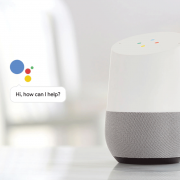If you have recently been filling up your home with smart devices, then you will have most likely noticed a Z-Wave logo on one of the boxes. This may have left you wondering, “What is Z-Wave?”.
In which case, you have come to the right place. As the appeal for having a smart home blows up, the demand for connected smart home devices continues to quickly rise. More and more people are looking to connect these devices through wireless technology. Add in Z-Wave and they’re good to go!
Throughout this article, we will be discussing what Z-Wave is, how it works, and what you should know in relation to your smart home.
What is Z-Wave?
As a leading technology found in thousands of smart home products, Z-Wave is a wireless technology that concentrates on connectivity within the smart home. Z -Wave is ultimately a simpler, inexpensive replacement to ZigBee. Wondering what ZigBee is? Check out our blog post here.
Introduced by Danish company Zensys, Z-Wave is a lower power alternative to Wi-Fi. It uses low-energy wireless radio technology to transmit radio waves between devices, allowing them to communicate with one each other. The technology is employed inside everyday smart devices such as plugs, sensors and switches.
How does Z-Wave work?
Z-Wave is a wireless radio frequency technology which enables smart devices to communicate and connect with one another. The technology works on the radio frequency range of 800-900MHz, meaning Z-Wave doesn’t particularly experience any significant interference issues. Dissimilar to ZigBee which operates on 2.4GHz – a great frequency for Wi-Fi. Home devices are made “smart” only when Z-Wave connectivity is added inside the design of the product.
Wondering how Z-Wave connects devices together? Contrary to connecting devices via a central hub when using Wi-Fi, Z-Wave links devices together to form a mesh network. Other than needing one main hub that needs to be connected to the internet, each individual device doesn’t need to be connected to Wi-Fi at all. Instead, the devices use Z-Wave connectivity to communicate with the central hub. The mesh network, known as source-routed mesh network topology, allows signals to jump from each device, meaning connectivity doesn’t essentially have to be direct.
Each device within your smart home network can be easily accessed and controlled via your smartphone, tablet or computer. So you are able to control your smart home from wherever, whenever! The Z-Wave central hub accepts a request from you which then directs the request to the end device. So as long as you have access to the internet, you will be able to control your smart home no matter where you are in the world.
What is Z-Wave Plus?
You perhaps might have seen the words “Z-Wave Plus” on the latest smart home devices. Fundamentally, Z-Wave Plus was the big upgrade given to the technology which was initially launched in 2004. Z-Wave Plus, also known as Z-Wave 500 series, boasts things like extended battery life, an increased range and extra RF channels. To put it simply, it is the latest certification standard of the wireless radio frequency technology.
The majority of new Z-Wave products are most likely to be equipped with Z-Wave Plus. But, regardless of what version of Z-Wave you are using, Z-Wave devices are still able to communicate with one another.
What Z-Wave devices can I control?
It is possible to have up to 232 nodes on one mesh network, meaning you can have 232 smart home devices in your household. Although it is very different from the 65,000+ devices available on ZigBee, it’s still a big enough number for you to kit out your whole home. The number of devices you want to utilise is completely up to you:
“Z-Wave is a highly scalable technology – it can control anywhere from one device all the way up to 232 devices in just one smart home network.”
What devices use Z-Wave?
Z-Wave has a large selection of smart home products which are available across well-recognised brands. Each product will allow you to create your ideal smart home. From smart plugs that wirelessly turn off plugged-in devices to gadgets that alert you if you have an intruder, there are limitless ways to operate your smart home.
Claiming over 700 members, the Z-Wave Alliance now has 2,400 products certified from these brands. That’s a staggering amount of devices available within the smart home market with built-in Z-Wave technology.
Why should I care?
Z-Wave has been named as “the safest, most secure ecosystem of smart devices on the global market”. It utilises AES-128 symmetric encryption – the same as competitor ZigBee.
The best thing about using Z-Wave is that alongside making your smart home system run more smoothly, you don’t need to do a thing to get the most out of it. The technology within your Z-Wave devices intelligently links to one another in your home to create a mesh network. Then it is completely up to you as to whether you want to link different devices via smart home apps or central hubs.
While you may want to look out for the Z-Wave certified sticker, there are numerous ways to get your connected gadgets to work across various platforms thanks to the rise of well known smart assistants that are built into speakers, such as the Google Home or the Anker Eufy Genie.























Comments